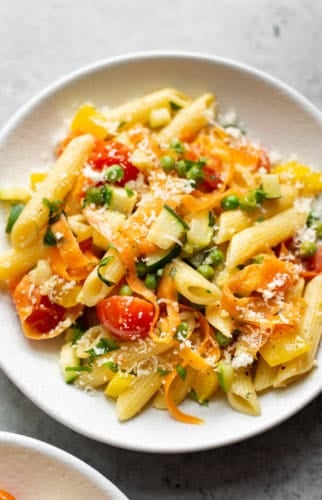
Pasta Primavera is a classic Italian American recipe that’s loaded with spring vegetables. It has a light and fresh sauce and is the perfect break from heavier winter foods!
Looking for more vegetarian recipes? Try this Farro Caprese Salad, this Buffalo Cauliflower appetizer, or The Best Broccoli Cheese Soup Recipe.
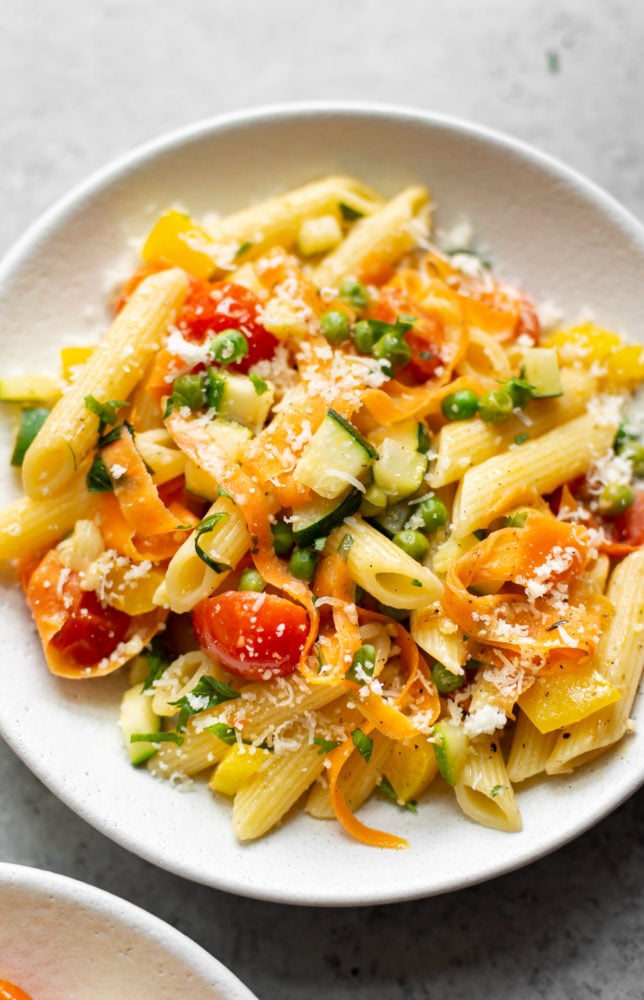
Pasta Primavera
Hi everyone! Natasha here from Salt & Lavender. I am soo excited for warmer weather and this spring pasta! This vegetarian Pasta Primavera recipe is wonderful after all the comfort foods we’ve had all winter long. It’s also nice if you want your carb fix but are starting to think about swimsuit season! It has a light lemony sauce that you will love.
What is Pasta Primavera?
“Primavera” means spring in Italian. It’s a simple pasta dish filled with spring vegetables. This recipe was invented in the USA in the 1970s – it’s not an authentic Italian recipe, which was somewhat surprising to me!
Pasta Primavera ingredients
You can feel free to swap for whatever vegetables you prefer or are sold at your local grocery store or farmer’s market, but this particular recipe has:
- Butter & Oil for the light sauce
- Zucchini
- Peas (I used frozen but you could use sugar snap or fresh peas if you have access to them)
- Bell pepper (use whatever color you prefer)
- Little tomatoes (grape or cherry work well)
- Carrots (I slice it very thin into ribbons so it cooks fast. You can also buy pre-cut matchstick carrots)
- Garlic
- Fresh lemon juice
- Italian seasoning (the dried herb blend you can find in the herb/spice aisle)
- Fresh basil
- Parmesan cheese (I like to grate my own for the best flavor and texture)
You could definitely add broccoli (or broccolini) or asparagus as well/instead of another ingredient.
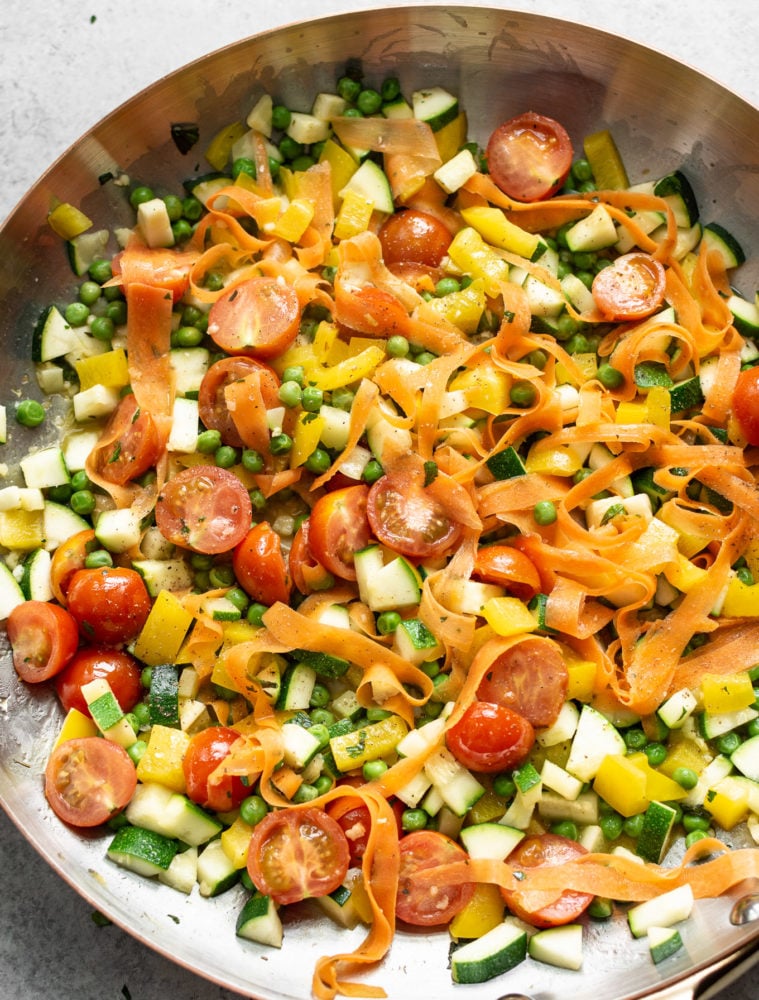
How to make Pasta Primavera
- Prep your ingredients (chop the veggies and grate that cheese!).
- Add the oil and butter to a skillet over medium-high heat.
- Once the pan is hot, add the vegetables and garlic and sauté, stirring often, for about 5 minutes until the vegetables are tender-crisp.
- Stir in the lemon juice, Italian seasoning, and basil.
- Before draining the pasta, add a splash of the pasta water (a tablespoon or two) to the skillet. Drain the pasta and add it to the pan and toss. Just before serving, stir in the parmesan cheese.
What kind of pasta to use?
I used penne, but feel free to use your favorite or whatever’s in your pantry.
Can you add protein to Pasta Primavera?
Absolutely! I’d add some raw shrimp in while you’re sautéing the veggies (they won’t take more than 5 minutes or so to cook), or add in cooked/rotisserie chicken and warm it through.
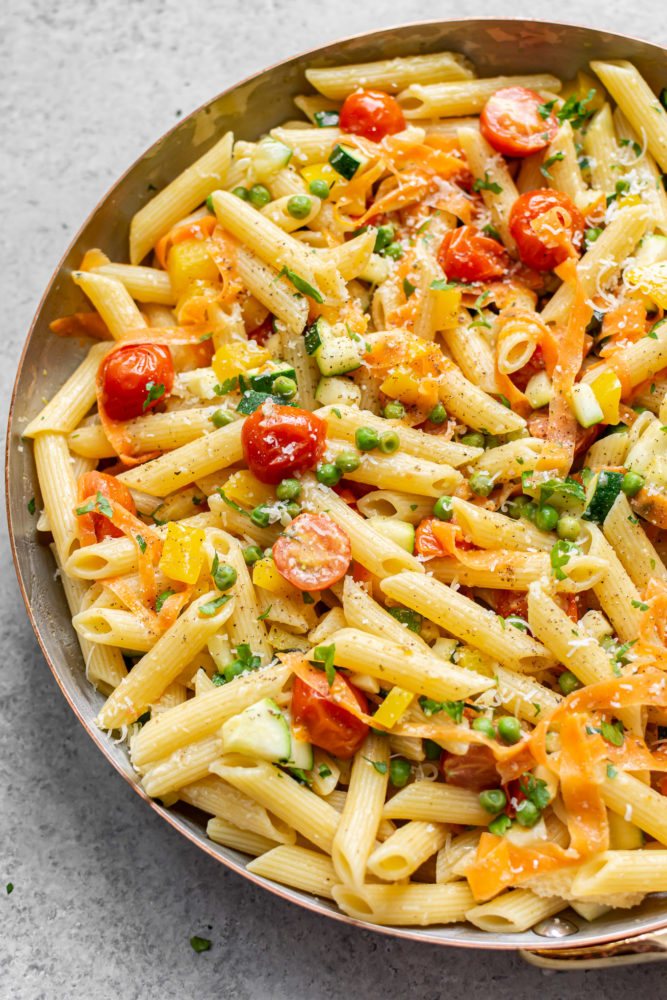
Other pasta recipes you’ll love:
- Easy Pasta Carbonara
- Creamy Chicken Spinach Pasta
- California Spaghetti Salad
- Greek Broccoli Pasta Salad
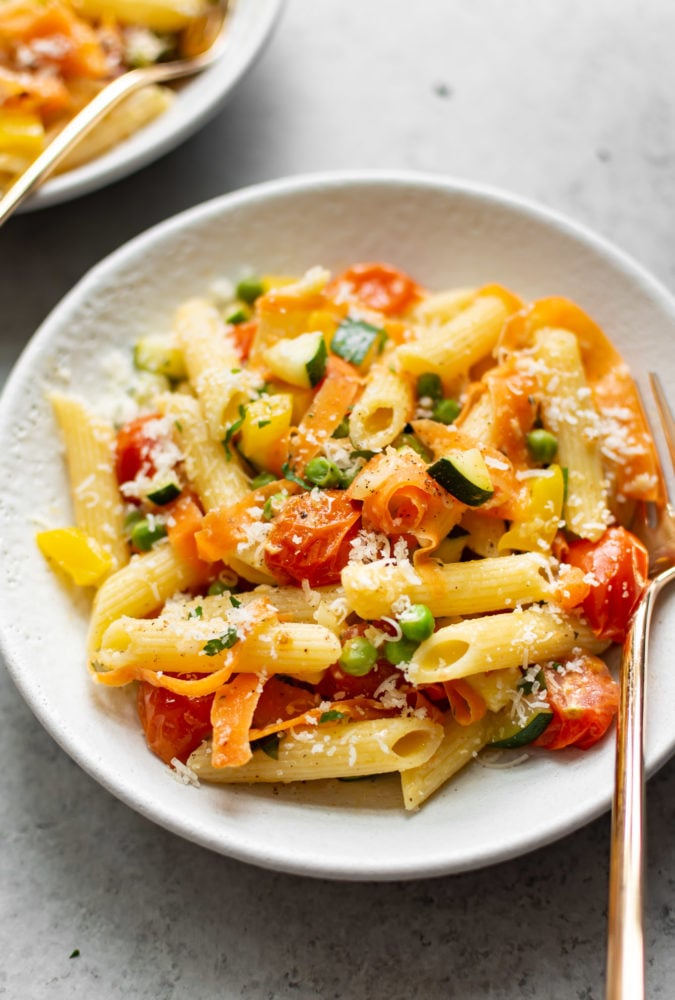
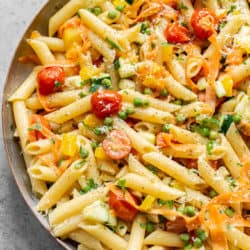
Easy Pasta Primavera
Ingredients
- 2 tablespoons butter
- 1 tablespoon olive oil
- 1 small zucchini (diced)
- 1/2 cup frozen peas
- 1/2 bell pepper (use any color)
- 5 ounces tomatoes (I prefer grape or cherry, cut into halves)
- 1 small carrot (use a vegetable peeler to cut into ribbons)
- 3 cloves garlic (minced)
- 1 teaspoon fresh lemon juice
- 1 dash Italian seasoning
- 1 tablespoon fresh basil (torn/sliced thin)
- 1/2 cup freshly grated parmesan cheese
- 8 ounces uncooked pasta
- Salt & pepper (to taste)
Instructions
-
Prep your ingredients and boil water for your pasta (cook it al dente according to package directions). Add the oil and butter to a skillet over medium-high heat.
-
Once the pan is hot, add the vegetables and garlic and sauté, stirring often, for about 5 minutes until the vegetables are tender-crisp.
-
Stir in the lemon juice, Italian seasoning, and basil.
-
Before draining the pasta, add a splash of the pasta water (a tablespoon or two) to the skillet. Drain the pasta and add it to the pan and toss. Just before serving, stir in the parmesan cheese. Season with salt & pepper as needed.
Notes
- Feel free to swap out any veggies you don't like. This is a very forgiving recipe!
Nutrition
from The Recipe Critic https://ift.tt/2UiM0Fb
Comments
Post a Comment
Please tell us what you think about this article